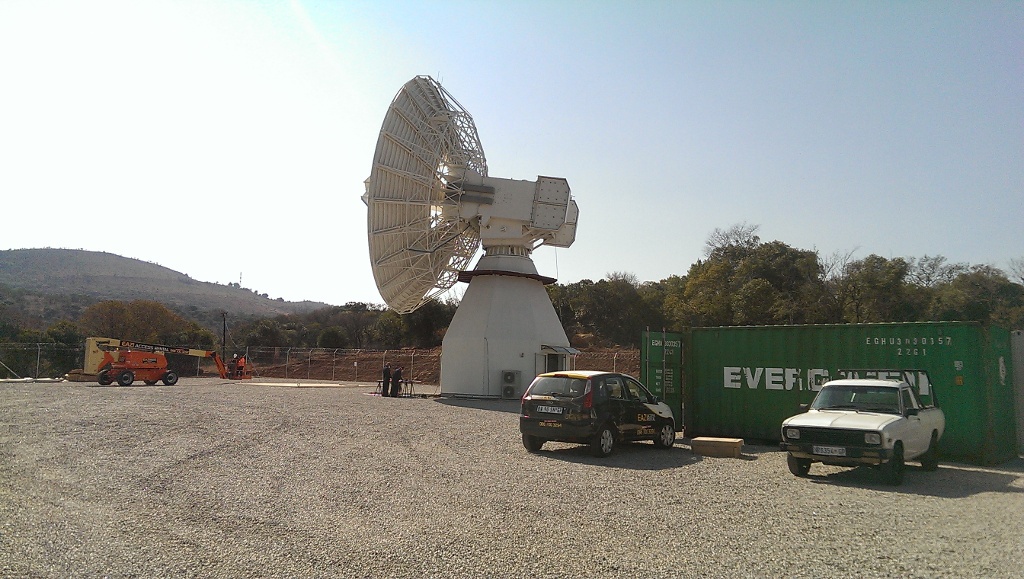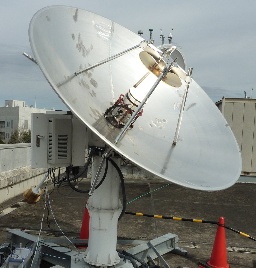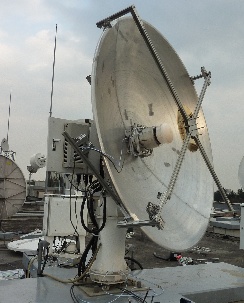...
Gerhard Kronschnabl and Alexander Neidhardt - 24 Feb 2016
HartRAO
Current status: Last concrete to be poured on 8 December 2016. Antenna will arrive around February 2017.
Photos from HartRAO construction site (1 December 2016)
Panel alignment is underway (last results were around 90 microns).
Commissioning tests are to be started in the beginning of August.
We have a live camera feed up and running (updated every minute) which can be accessed at: http://www.hartrao.ac.za/xxvgs_liveview.php
Photos from HartRAO VGOS site (14 July 2017)
Currently there is a camera installed on site, however there is no network connectivity yet. For updated videos and photos please visit:
...
Philip Mey - 1 Dec 201621 July 2017
Ishioka
- Operation of Ishioka antenna is now under interruption because of construction of operation building, and will resume after April.
- Modification of cryogenic dewar for QRFH system is being done.
...
Shanghai
Foundation construction now to start at the end of February. - Update from Guangli, 25 Jan 2017
Finally the construction company was determined from Finnally the construction company was determined from competitive tender, for the foundation. Yesterday Yesterday the contract was signed. There are still uncertanties before the real construction work, the approvement of fire control and enviromental protection. These may take two weeks, or more than one month. After this, the foundation construction could be finished in 4 months, and another ~5 months for antenna installation and station systems integration.
Guangli Wang - 1 Dec 2016
...
Jim Lovell - 26 May 2016
Kashima 34m
- 34m antenna ACU trouble was fixed. There are no significant change and progress at 34m station.
- Broadband 24h experiment was conducted between MBL1-MBL2-Ishioka13 stations. Purpose was to check improvement of residual and precision in geodetic observation. Since precision of delay observables have been exceeding the post fit residuals in Kas34-MBL1-MBL2 observations and it has been indicating troposphere is the limiting factor of geodetic/frequency transfer VLBI. I expected improvement by fast switching with Ishioka-MBL1-MBL2 network. Though the network is small and elevation angles are almost the same for all stations, thus it seems that independence of parameter estimation of Atm is not good enough, unfortunately. Experiment was in 12-13 Sep. and correlation processing has finished. We will try to see the analysis next week.
Mamoru Sekido - 22 Sep. 2016
Yebes
- We replaced 1.6m dish with 2.4m Cassegrain optics of MARBLE1 station at NMIJ(Tsukuba) in March. Now we have two 2.4m dish at NICT(Koganei in Tokyo) and NMIJ( Tsukuba)
Marble1
(Tsukuba)Marble2
(Koganei)
- Broadband observation sessions conducted in 2016 were performed with 2048Msps-1bit-4ch mode. Frequency array was:
Lower_edge ( Center Freq)=
3188MHz(3700), 4788MHz(5300), 9588MHz(10100), 12788MHz(13300)
5388MHz(5900), 6588MHz(7100), 8188MHz(8700), 10088MHz(10600)
3288MHz(3800), 5388MHz(5900), 8188MHz(8700), 10088MHz(10600) - If any station can do broadband fringe test observation (1GHz bandwidth for single channel), we are pleased to be a counterpart of the experiment. We will make correlation and provide the results. Frequency array can be arranged flexibly.
- Comments on Broadband Observation.
- Broadband Data acquisition has advantage in tolerance to RFI. It is preferable to be broadband at the stage on analog/digital conversion.
- I prepared a stuff on RFI for TOW meeting at Haystack. It tells our status of receiving signal and RFI conditions.
- URL: http://www2.nict.go.jp/sts/stmg/ivstdc/siryou/2017/IVS-TOW/RFI-TOW2017sekido.pdf
Mamoru Sekido - 26 Apr. 2017
Yebes
We are taking part in the biweekly 24 hour VGOS tests. For those observations we use 4 RDBE-G units, 500 MHz bandwidth each band and polarization. We do not plan to make any hardware update in the near term. Our next mid-term goal is installing a combination of filters that will filter out frequencies below 3 GHz but will allow the passage of the legacy S band. That should allow us to install two amplifiers per polarization and not saturate the optical fiber amplifiers.
Pablo de Vicente - 25 Jan 2017
Broadband system temperatures are ~ 50 K - 70 K. The warm amplifiers after the cryogenic ones and before the optical fiber converters had to be removed to avoid saturating the amplifiers used to modulate the optical laser. This increased the Tsys by a factor 2. Furthermore one of the optical channels uses an 18 dB amplifier and the other one 9 dB. This is an issue to be solved in the future.
...
G. Tuccari - 26 May 2016
We are working for exchanging 1.6m dish with 2.4m dish of MARBLE1 station at NMIJ(Tsukuba).




